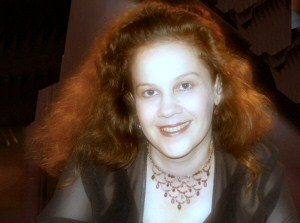Balmy weather in New York may seem like stiff competition for one’s afternoon versus sitting indoors at a piano recital, but a lot depends on the program and the artist. As it turned out, Gila Goldstein’s piano recital was the perfect welcome to imminent spring. Opening with a substantial work by J. S. Bach, whom many musicians associate with spring (both for his birthdate and his perennial newness), Ms. Goldstein gave one of the finest accounts I can recall of the Partita in E minor.
From its opening Toccata movement, tastefully and meaningfully embellished, she projected its singing lines with a sense of freedom without ever losing sight of the pacing and framework, clearly and thoroughly conceived. To say that a performance is thoroughly satisfying may sound to some like faint praise, but, considering how rarely such a reaction occurs with Bach performances today, it is not. As a pianist-reviewer it can be difficult to set aside one’s preferences within the wide range of possible Bach interpretations, and unsurprisingly, there were fleeting moments in Sunday’s recital when I felt I would have tried for something different; remarkably, however, in each case the dispute was settled by hindsight (or should I say hindsound?), in that her choices ultimately made sense in revelatory ways. I especially admired Ms. Goldstein’s expert treatment of overlapping voices, where individual lines are often either buried or thumped out, and here they simply shone clearly through the transparency of texture she achieved. The Allemande movement was poetically delivered, and while some might take exception to the tendency to shrink suddenly in volume at melodic high points (here and in other movements), there was Romantic poignancy in such moments. The Corrente was so feather light and marvelously controlled in each nanosecond that I was sad that the repeats had not been observed, as it was all over in a blink. Here and elsewhere, Ms. Goldstein followed her heart, and in the end the repeats and absence of repeats all balanced out in a logical way. The Sarabande was thoughtful and compelling, though I occasionally felt that some of the embellishments (as a way to be declamatory perhaps?) burst forth in a way that distracted a bit from the long lines. In any case, it was always engaging, and the Tempo di Gavotta and brilliant Gigue left one wanting for nothing. I would love to hear Ms. Goldstein play and record much more Bach, as I imagine she could easily become one of my favorite Bach interpreters.
In a way, all one has to do after such a fine performance is to avoid spoiling the afterglow – so it was with some reluctance that I moved my attention to anything else – but Ms. Goldstein continued her program quite admirably. Chopin’s Polonaise in C-sharp minor, Op. 26, No. 1, was sensitively delivered next, with more of the arresting “subito piano” phrases one had heard in the Bach, and the exquisite Nocturne in B Major, Op. 62, No. 1, one of my favorites, followed without pause. Possibly the only thing I can imagine that would have heightened the beauty of this performance would have been greater seamlessness in the string of trills at the return of the opening melody – it is something over which pianists lose sleep, but it can bring a performance to a transcendent level. Chopin’s Barcarolle Op. 60 brought the first half to a commanding close; although the Romantic leanings shown in the Bach had led one to expect more reveling in the extravagant beauty of this work, Ms. Goldstein was persuasive in a relatively taut, muscular reading, leaving much to ponder.
After intermission came Liszt’s Vallée d’Obermann from the Years of Pilgrimage, Volume I (“Suisse”), given great loving attention to detail in the gentler sections and a bold approach in the octave fusillades. Ginastera’s Sonata No. 1 added just the right dimension of dissonance after so much lush harmony, and it was just as vibrant as it needs to be. The first movement could have benefited from a bit more left hand clarity in extremely rapid passages, and the second movement left me wondering whether soft parts could have been still softer (especially where marked with “ppp”), but it seems rather greedy to ask for more of anything when such excellence abounded. Persistent applause was rewarded with an encore of Tchaikovsky’s “October” from The Seasons. It seemed the audience could have stayed for much more, myself included.

